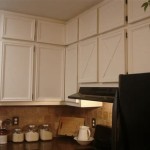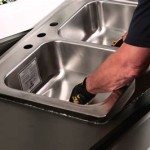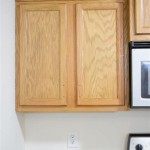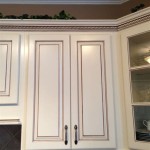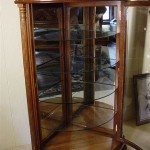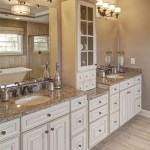Cabinet Materials: What You Need to Know
Cabinetry is a foundational element of any kitchen, bathroom, or built-in storage space. Selecting the right cabinet materials is critical for achieving the desired aesthetic, durability, and functionality. The market offers a diverse range of options, each with unique properties, associated costs, and suitability for different environments. Understanding these characteristics empowers informed decision-making and ensures long-term satisfaction with cabinet choices.
The longevity and performance of cabinets are directly linked to the materials from which they are constructed. A robust material choice resists warping, cracking, and damage from moisture and daily wear. Conversely, selecting an inappropriate material can lead to premature degradation and costly repairs or replacements. Furthermore, the material influences the overall style and feel of the space. The grain, texture, and finish of the wood, or the sleekness of a laminate, contributes significantly to the design aesthetic.
Price is a major consideration in any cabinet project. Different materials occupy varying price points, reflecting their availability, manufacturing processes, and inherent qualities. While it may be tempting to opt for the least expensive option, it's prudent to consider the long-term cost-effectiveness of a more durable material that will withstand the test of time. Balancing budget constraints with the desired level of quality and longevity is a key aspect of the selection process.
Solid Wood Cabinets: A Timeless Choice
Solid wood cabinets represent a classic and highly desirable option. They are known for their natural beauty, inherent strength, and ability to be refinished or repaired. Solid wood offers a warm, inviting aesthetic and can be customized with various stains, paints, and finishes.
Hardwoods, such as maple, oak, cherry, and walnut, are frequently used for cabinet construction. These species offer superior durability and resistance to dents and scratches compared to softer woods. Maple is a popular choice due to its tight grain and versatility in accepting different finishes. Oak is known for its prominent grain pattern and robust nature. Cherry offers a rich, warm tone, while walnut provides a distinctive dark and luxurious appearance. The choice of wood species often dictates the overall style of the space, ranging from traditional to contemporary.
Softwoods, such as pine and cedar, are less expensive alternatives to hardwoods. However, they are more susceptible to damage and may not be suitable for high-traffic areas or environments with high humidity. Pine is often used for rustic or farmhouse-style cabinets, while cedar is valued for its aromatic properties and resistance to insects. When using softwoods, it's crucial to apply a protective finish to enhance their durability.
One significant advantage of solid wood cabinets is their repairability. Dents, scratches, and other minor damages can often be repaired with wood fillers, sanding, and refinishing. This extends the lifespan of the cabinets and helps to maintain their appearance over time. Their ability to be refinished also means that cabinets can be updated to reflect changing styles without requiring a complete replacement.
Solid wood, being a natural material, is prone to expansion and contraction with changes in temperature and humidity. This can lead to warping or cracking, especially in environments with extreme fluctuations. Proper acclimation of the wood to the environment before installation can minimize these issues. Also, choosing a cabinet construction method that incorporates floating panels or other techniques helps accommodate wood movement.
Plywood Cabinets: A Stable and Versatile Option
Plywood is an engineered wood product composed of multiple layers of wood veneers glued together under high pressure. This construction method provides exceptional strength and stability, making plywood an excellent choice for cabinet boxes and other structural components.
Plywood exhibits superior resistance to warping and cracking compared to solid wood. The cross-laminated construction counteracts the natural tendency of wood to expand and contract, resulting in a more stable and durable material. This makes plywood particularly suitable for humid environments or applications where dimensional stability is critical.
Plywood commonly used for cabinetry includes hardwood plywood and softwood plywood. Hardwood plywood, typically made with a hardwood veneer on the face, provides a smooth and paintable surface. Softwood plywood possesses similar qualities, at a potentially reduced cost. The quality of the plywood is determined by the number of layers, the thickness of the veneers, and the type of adhesive used. Higher-grade plywood offers greater strength, stability, and resistance to moisture.
The cost of plywood generally falls between solid wood and particleboard or MDF. While it may be more expensive than the latter, its enhanced durability and stability often justify the investment, particularly for cabinet boxes that require robust construction. Plywood offers a good balance of performance and affordability.
While plywood offers excellent structural integrity, its exposed edges can be aesthetically unappealing. Edge banding, veneers, or solid wood trim can be used to conceal the edges and provide a finished look. These treatments enhance the appearance of the plywood cabinets and integrate them seamlessly into the overall design.
Particleboard and MDF Cabinets: Budget-Friendly Alternatives
Particleboard and Medium-Density Fiberboard (MDF) are engineered wood products made from wood fibers bonded together with resin. These materials offer a cost-effective alternative to solid wood and plywood and are commonly used for cabinet doors, drawer fronts, and cabinet boxes in budget-conscious projects.
Particleboard is made from coarse wood chips compressed and bonded with adhesive. It is the least expensive option among the cabinet materials discussed. However, it is also the least durable and most susceptible to moisture damage. Particleboard can swell, warp, or crumble if exposed to water or high humidity. Therefore, it is generally not recommended for use in bathrooms or kitchens unless it is properly sealed and protected. Particleboard is often used as a core material for laminate or veneer-covered cabinets.
MDF is made from finer wood fibers than particleboard, resulting in a smoother, denser, and more stable material. It offers better machinability and paintability than particleboard. MDF is also less prone to warping and cracking. This fact makes it a preferred choice for cabinet doors and drawer fronts, where a smooth, even surface is desired. However, MDF is still susceptible to moisture damage and should be used with caution in wet environments.
Both particleboard and MDF are available in a variety of thicknesses and densities to suit different applications. Thicker and denser boards offer greater strength and stability. It is important to select the appropriate grade of material for the intended use to ensure adequate performance. They are often covered with Thermofoil, a heat-sealed plastic coating available in a variety of colours and styles, to enhance their aesthetic and give moisture protection.
The primary advantage of particleboard and MDF is their affordability. They are significantly less expensive than solid wood and plywood, making them attractive options for large-scale projects or budget-constrained renovations. However, it's crucial to weigh the cost savings against the potential for reduced durability and longevity.
Particleboard and MDF are not as easily repaired as solid wood. Dents, scratches, and other damages can be difficult to fix, and the materials may not hold screws or fasteners as well as solid wood or plywood. When using these materials, it's important to take extra care during installation and use to prevent damage.
Proper sealing and finishing are crucial for protecting particleboard and MDF cabinets from moisture damage. Applying multiple coats of paint, primer, or sealant helps to create a barrier against water penetration. Edge banding is also essential for sealing the exposed edges of the boards and preventing moisture from seeping in.
Choosing appropriate cabinet hardware is also important when working with particleboard or MDF. Use screws and fasteners that are specifically designed for these materials to ensure a secure and lasting connection. Avoid over-tightening screws, as this can strip the threads and weaken the connection.

Kitchen Cabinet Materials Everything You Need To Know Renoassistance

5 Common Kitchen Cabinet Door Materials You Must Know The Maker

Cabinetry 101 A Quick Overview Of What You Need To Know About Cabinets Autograph Design

What Should You Know About Kitchen Cabinetry Handles And More

Kitchen Cabinet Materials Pros And Cons You Need To Know

How To Choose Kitchen Cabinets Everything You Need Know

Everything You Need To Know About Tool Box Materials Abasco Tools

Kitchen Cabinets Everything You Need To Know The Interior Couture

Cabinets The Kitchen Consulting Co

Kitchen Cabinet Materials Pros And Cons You Need To Know
Related Posts

